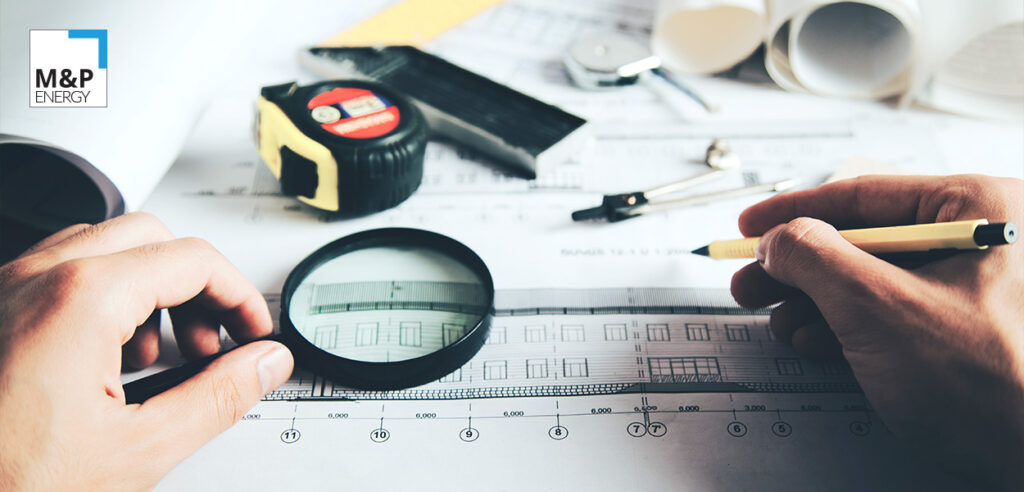In today’s energy-conscious world, businesses are increasingly focusing on energy efficiency to reduce operational costs and meet sustainability goals. M&P ENERGY GmbH is leading the charge with a structured, data-driven approach, offering tailored solutions like renewable energy applications and sustainable energy solutions that balance economic and ecological considerations. Their work is guided by the DIN EN 16247 standard, ensuring that energy audits and building inspections are thorough and results-oriented, ultimately delivering measurable improvements in building energy optimization and performance.
A Step-by-Step Process for Building Energy Audits
1. Initial Contact and Assessment
The process begins with initial contact, setting the foundation by outlining the building’s energy characteristics and the client’s energy efficiency goals. This involves gathering critical energy data and setting objectives for future energy optimization measures.
- Define building energy optimization objectives.
- Establish key performance indicators for energy efficiency analysis.
- Set targets for energy-saving potential.
2. Kick-off Meeting
A detailed kick-off meeting is held to finalize the specific goals of the energy audit. This meeting establishes the objectives for energy efficiency audits and ensures all parties understand the requirements for energy data collection and energy consumption analysis.
- Define renewable energy applications and potential integration points.
- Outline steps for improving energy efficiency solutions for buildings.
3. Data Collection
A thorough energy data collection process is essential for ensuring a reliable energy profile of the building. This includes electrical system inspection, HVAC system inspection, and the collection of historical energy consumption data to identify inefficiencies and areas for improvement.
- Analyze energy consumption of heating, cooling, and electricity.
- Document building energy optimization strategies.
- Gather historic energy data and consumption patterns over the last 12 months.
4. Data Preparation for Energy Audits
The collected data is then processed to identify inefficiencies and areas for improvement. By structuring the data into a dynamic simulation model, M&P ENERGY GmbH can pinpoint areas where renewable energy can be applied and recommend targeted energy efficiency solutions.
- Organize data for energy efficiency audits.
- Identify potential savings through energy optimization measures.
5. Building Walkthrough and Inspection
Engineers conduct an onsite building inspection, covering every aspect of energy consumption from transformers to end-user appliances. During this inspection, experts assess the building’s technical systems, including HVAC system inspection and electrical system inspection, ensuring that every energy-consuming component is considered.
- Identify inefficiencies in the energy consumption analysis.
- Explore opportunities for renewable energy applications, such as solar or wind energy integration.
- Ensure compliance with relevant energy efficiency standards.

6. Energy Data Analysis and Energy Audits
After the building inspection, the data is subjected to rigorous analysis. This stage helps uncover inefficiencies, assess potential savings, and evaluate the impact of sustainable energy solutions.
- Develop energy profiles to guide building energy optimization.
- Pinpoint inefficiencies through energy efficiency audits.
- Propose recommendations for integrating renewable energy applications.
Statistical Insight:
On average, businesses can achieve a 10-15% reduction in energy costs within the first year of implementing these measures. By incorporating renewable energy applications, such as solar panels, energy savings can increase to 20-25% over the same period.
7. Documentation and Reporting
The findings from the energy audit are compiled into a comprehensive report, providing a clear overview of the building’s energy performance. This report includes detailed analyses and optimization measures that can lead to significant reductions in energy consumption.
- Summary of energy audits and inspection results.
- Recommendations for energy efficiency solutions for buildings.
- Next steps for implementing renewable energy systems.
8. Final Review and Recommendations
A final meeting is held to review the audit’s results and outline the next steps. Recommendations include detailed plans for integrating sustainable energy practices, along with practical optimization measures that ensure ongoing improvements.
- Present results of energy efficiency audits.
- Finalize energy efficiency solutions and renewable energy applications for immediate implementation.
Summary of the Process: Table
| Step | Description |
| Initial Contact and Assessment | Define objectives, establish KPIs, and set energy-saving potential targets. |
| Kick-off Meeting | Set specific goals, outline renewable energy integration, and energy efficiency steps. |
| Data Collection | Inspect systems, analyze historical data for inefficiencies, and document optimization strategies. |
| Data Preparation | Process data for audits, identify savings, and recommend renewable energy applications. |
| Building Walkthrough | Conduct onsite inspections, covering technical systems and compliance with standards. |
| Data Analysis | Analyze data, identify inefficiencies, and propose renewable energy integration. |
| Reporting | Provide a detailed report with recommendations and next steps. |
| Final Review | Present findings, finalize solutions, and discuss immediate implementation steps. |
Future Projections and Industry Insights
- By 2030, buildings that implement sustainable energy solutions could see a 40-50% reduction in energy consumption compared to traditional buildings.
- Incorporating renewable energy applications is projected to cut carbon emissions by up to 30%, helping companies meet global sustainability targets.
- According to the International Energy Agency (IEA), adopting energy-efficient practices and sustainable energy solutions could lead to cumulative global energy savings of 6500 TWh by 2030, equivalent to reducing CO2 emissions by 6.5 gigatons.
The structured approach of M&P ENERGY GmbH ensures that businesses not only comply with energy regulations but also achieve meaningful reductions in energy use and costs. Their expertise in energy audits, building energy optimization, and renewable energy applications provides companies with a clear roadmap toward energy efficiency and sustainable energy solutions.
By following this process, organizations can expect to see immediate improvements in energy efficiency, leading to long-term savings and a reduced environmental footprint. If your organization is ready to optimize its energy performance, M&P ENERGY GmbH has the experience and expertise to guide you every step of the way.


